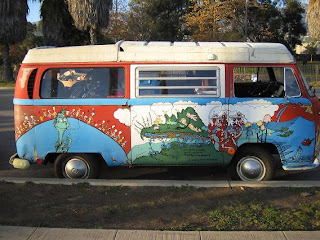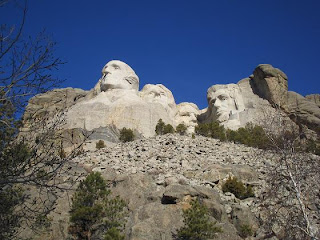I've taken off from the Canadian prairies and am heading south. My take-off
was six minutes after filed, which will affect my arrival time at customs. They
told me on the phone, rather fiercely, that I had a fifteen minute window. More
than seven minutes early or more than seven minutes late and I'm in trouble.
Customs officers have families the man on the phone said, and they want
to spend time with them, not waiting for me. I'm not worried about the six
minutes though, because, knowing I could always slow down if I needed to, I told
them I'd be a little longer than I though I would. I can always slow down a
little as I approach, or just taxi really slowly, if there are no delays. And
maybe I'll luck out and get a customs officer with a new baby at home, who is
glad of the opportunity to escape the associated smells and sounds.
I'm VFR today, flying at only a few thousand feet above flat terrain, and
radar coverage is sparse in this part of the world, so ATC decide they don't
want to talk to me anymore. Theoretically I'm supposed to have ATC contact
during the border crossing, so I call up an American ATC unit. They don't want
to talk to me either, but I have at least fulfilled the letter of the law as the
brown flat bits beneath switch from Canadian to American.
Once I'm established on the faintly red, white and blue striped side of the
border, probably in a red state, I'm navigating to just miss the corner of a
Military Operations Area. It's marked on the chart, and outlined on the GPS, but
that's not what I'm navigating by. This part of this state is basically flat,
but every once in a while there's a mountainous part. And this particular
mountain exactly coincides with the MOA, almost as though the mountains
themselves were some sort of secret military project. Maybe they aren't
mountains at all, but an illusion of mountains, created by the people with the
black helicopters to hide their secret base. At my out-of-the-wind altitude, I
choose to go around the peaks of the mountains, rather than testing their
solidity and defenses.
Other than that slight deviation, my trip is a couple of hours of straight
travel. The engines gauges all sit happily at their expected values and the
engines sound fine on either side of me. There are a lot of bugs on the
windshield, though. I guess it's that time of year on the prairies again.
As I approach my destination, and I pick up the ATIS to find out the current
conditions, the GPS says my arrival time will be to-the-minute as planned, I've
made up the six minutes. Okay, maybe I cheated a tiny bit with power, not just
the winds.
Speaking of winds, there is a bit of a crosswind at destination. I think it
was 22 knots about 15 degrees off the runway. This airplane is pretty solid in a
crosswind. That's not even enough to be fun. I call the tower and am sequenced
for landing, almost straight in from my direction of travel. The aircraft in
front of me are being passed the winds. (As I type this, a Beavis and Butthead
voice in my head says "passed wind, heh heh," but giving someone information by
radio is called "passing" and information about wind strength and direction is
"winds" so what else can I say?) The winds are increasing and diverging from the
runway by the minute. When I am on two-mile final, the wind is 42 knots, I
remember that figure, but not the angle. It was over thirty, so more than twenty
knots of direct crosswind. There is another runway I can ask for, which by this
time is more aligned with the runway, and I'm thinking I will probably overshoot
and land on it, but crosswinds are such fun. It won't take any more time now to
try and then turn for another runway than it would be to ask for the other
runway right away, so I continue, somewhat sideways, for this one. On short
final I start to straighten the airplane out. This is where I could discover I
don't have enough rudder to land the airplane in this direction. I have been
approaching with the wings level and the nose pointed into the wind to keep my
direction of travel aligned with the runway centreline. Now I'm rolling my into
wind wing down at the same time as I press down the away-from-wind rudder pedal.
I have to decrease my bank momentarily to get the nose aligned with the runway,
but then I put the bank back in and everything holds.
I don't really have enough rudder left over to cope with any sudden gusts,
but so far the wind has been very steady. I keep asking myself, "Should I reject
this?" I need to leave room for something unanticipated to go wrong. I'm also
carrying enough power that I can keep the airplane airborne in ground effect,
and I'm ready to go around. But the wind is from the right, and I expect it to
continue to decrease and also back, become more from the left as I descend the
last bit to the runway. I overfly the beginning of the runway. I'm straight and
on the centreline. I reduce the power and put the airplane down, first the into
wind wheel and then the other. Yah, triumph!
Using power that way isn't really the right way to land. By the textbook I
should have done a firm, solid landing with no float, so as to get the airplane
firmly on the ground before a gust could carry me sideways. I took advantage of
the fact that I had much more runway than I needed, so I didn't have to make my
decision right at the runway. There's also no problem making the away-from-wind
turn to exit the runway onto the taxiway. I expected it would be harder because
the airplane would act as a weather vane and try to point towards the wind. I
think the surface wind must be less than they are calling it.
I taxi to customs, right down at the end of the runway. There's a little
building behind a black helicopter with "Homeland Security" stencilled along it
in serious letters. As I shut down the engines a customs officer comes around
the nose towards my boarding door. I set the parking brake and come back to open
the door. The wind tears it out of my hands and it slams open. Fortunately the
customs officer wasn't standing in a position that made me liable for
decapitating a federal officer. I'm sure there's a serious penalty for that. I
stick my head outside and wow yes, I believe it's 42 knots now. Easily. The
officer yells over the wind for me to bring my passport, licence and aircraft
documents inside. He'll meet me there. He flees.
I collect my documents, borrow and set chocks and come inside, probably
looking like a troll doll from the wind. The customs clearance is painless. He
inspects my licence, my passport, the airplane registration, my proof of
purchase of a customs decal and consults the computer a bit then tells me I'm
all done. He's much friendlier than the guy on the phone. Maybe he doesn't
actually have a family. I ask him if there's one FBO on the field that is more
appropriate for my size airplane than another. Sometimes one FBO caters mainly
to jets, or one has parking gauged to small singles. He isn't supposed to give
recommendations, but manages to let me know which one everyone goes to.
When I get back to the plane I see that the wind has blown the chocks right
out from under the wheels! The chocks are two wedge-shaped blocks of wood
connected by a rope. That's normal for wheel chocks, so you can pick them up
both at once, and hang them on a hook. The wind in this case caught the rope
like a flag and that was enough force to pull the chocks out. Fortunately the
brakes held. I restart the airplane and get taxi clearance to the FBO, past the
Homeland Security helicopter. I don't know helicopters, so I can't tell you what
sort it was, but it was big. I wouldn't be surprised if it could seat ten
well-armed people. It definitely cost a lot of money. I was going to take a
picture of the helicopter for you, but you know, Homeland Security.
I taxi up to the FBO and more troll-haired people marshall me into parking
and scurry to tie down the airplane. I laugh, climbing out of the airplane,
about how strong the wind is, and how it came up just as I was landing. "We saw
you land," they tell me, "you did a good job." I suppose I would sit and watch
and laugh pilots trying to land in that, too. Maybe take some video.
I stayed at a hotel the FBO called for me, and ate next door in a truck stop
diner. And the food was excellent. I seem to have discovered a pattern lately of
unexpectedly good food in diners and airport restaurants in the northern states.
Either the baseline standard for restaurant cuisine is higher here, or good
restaurants just have lousy decor.
Also there's an e-mail from a company I've applied to, inviting me for an interview for a jet job. I can't come because their week of interviews occurs while I am out of the country, but I tell them to keep me in mind for future opportunities. Perhaps my unwillingness to screw over my current employer will reflect well on me.




















